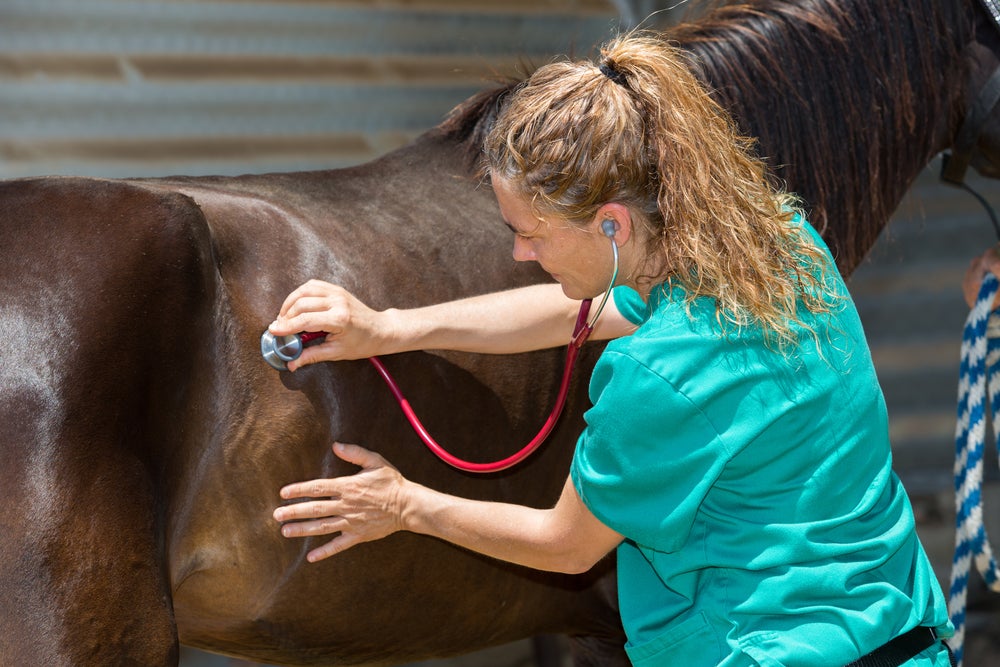An aggressive outbreak of Equine Herpesvirus-1 (EHV-1), including neurological cases classified as equine herpes myeloencephalopathy (EHM), has triggered urgent warnings from equine veterinarians across Texas and surrounding regions.
Clinics report that several horses returning from early-November events — including the WPRA Finals in Waco and competitions at the 377 Arena in Stephenville have shown severe and rapidly progressing clinical signs, with some owners already reporting fatalities.
Equine Sports Medicine & Surgery was among the first to issue detailed guidance, emphasizing that “continued biosecurity is essential to minimize spread” as competitors travel home from the WPRA Finals, the BFA, and other large gatherings. The clinic advises that exposed horses “should be isolated for the next 14–21 days,” kept at least 30 feet from non-exposed animals, and handled under strict quarantine procedures that prohibit nose-to-nose contact, shared equipment, or shared water sources.
Staff warn that clothing, boots, and hands can transmit the virus between horses and recommend temperature checks twice daily, noting that “fever if >101.5°F” is a key early indicator. Owners are also urged to monitor for nasal discharge, stumbling, loss of tail tone, or difficulty urinating — symptoms commonly seen as respiratory disease progresses toward neurologic involvement.
Double X Veterinary Services confirmed an exposure risk for horses that attended the WPRA Finals from November 4 to 9 or the events at 377 Arena on November 15 and 16. Their announcement urged owners to “quarantine immediately for the next 14 days and do not leave the premises during this time.” The clinic is currently requiring owners with exposed horses to keep animals on the trailer during appointments so that staff can triage cases without risking contamination of the facility.
Veterinarians across the region stress that EHV-1 spreads easily through direct horse-to-horse contact, aerosolized droplets from coughing or snorting, contaminated equipment, shared tack, trailers, stalls, and even through people who handle multiple horses. Some individuals involved in the discussions have noted that this particular cluster may involve a strain “that does not always show a fever first,” heightening the importance of quarantine even when horses appear outwardly normal.
Community concerns continue to grow as horses from Waco traveled on to Oklahoma for the BFA, with numerous competitors confirming that animals from both Texas events are now commingled. Although no positives have yet been publicly confirmed from the 377 Arena or the BFA, veterinarians caution that test results often take several days, and a lack of early positives should not be interpreted as proof of safety. Outbreak patterns reported by the American Association of Equine Practitioners show that asymptomatic shedding and delayed onset are both common features of EHV-1.
ESMS has additionally advised clients that horses with known exposure should not be brought to clinics for routine services such as vaccinations, Coggins tests, dental work, reproductive appointments, or lameness exams for at least 14–21 days. Emergencies must be triaged carefully, with many cases initially evaluated in quarantine areas to protect veterinary hospitals from contamination and potential shutdown. Clinics caution that bringing exposed horses onto veterinary premises poses extreme risk to other patients and could compromise a hospital’s ability to provide care.
Biosecurity measures are also tightening at private barns and training centers. Training facilities such as Hammerness Performance Horses have issued a public notice stating that, “In response to recent EHV-1 cases reported in the region [we] will be temporarily closed to any and all outside horses.” The barn stressed that this was a proactive decision, not a response to illness on-site. “To be clear: we do not have any sick horses, symptoms, or suspected cases at HPH. This temporary closure is a preventative measure only, taken to protect the health of all horses at our facility,” the statement read. Management noted that the team is “monitoring the situation closely and continuing to uphold strict biosecurity,” and promised to provide updates as conditions change and normal operations resume.
Disinfection protocols remain central to containment. ESMS recommends a complete cleaning of trailers, buckets, and tack by first removing all organic material, followed by a 1:10 bleach solution or other quaternary ammonium, accelerated peroxide, iodophor, or peroxygen disinfectant with label-specific contact times. Because the virus is so easily spread through contaminated surfaces, stalls, and human clothing, sanitation must be thorough.
Testing can be performed with nasal swabs and whole-blood samples, but veterinarians caution that testing too soon after exposure can yield false negatives. Labs receiving high volumes of samples may also experience delays that extend turnaround times.
Vaccination remains a point of clarification. Both ESMS and the American Association of Equine Practitioners reiterate that vaccinating exposed horses is not recommended. Horses without known exposure should remain current, ideally with products such as Rhinomune or Pneumabort, though any EHV-1 vaccine is better than none when paired with strict biosecurity.
Treatment options depend heavily on case severity. Horses testing positive but remaining standing and able to urinate and defecate normally may be managed on-farm under strict isolation.
While social media posts have magnified concerns, veterinarians stress that panic is not effective; proactive management and stringent containment measures are. According to the AAEP, EHV-1 is a ubiquitous virus with worldwide distribution, and outbreaks most often happen when horses congregate in large numbers and then return home before the development of symptoms. The existence of latent infections and stress-induced viral shedding complicates control efforts, making quarantine and biosecurity key.
For now, veterinarians encourage owners to stay home, limit horse movement, communicate openly with their clinics, and follow state and event-specific recommendations. As ESMS noted, “transparency with your veterinarian is essential as horses coming from these events pose a high risk not just to your farm but to veterinary practices.” Clinics across Texas and Oklahoma continue to monitor the situation, and updates will be issued as test results are confirmed and state animal health officials release new guidance.


